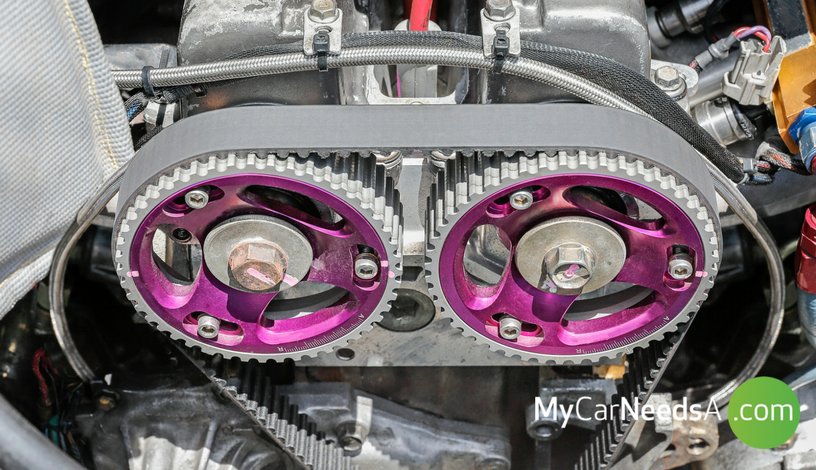

The crankshaft is needed to regulate the positioning of the engine’s pistons, while the camshaft opens and closes the motor’s valves. The car’s timing belt is linked to both the crankshaft and camshaft. The car engine cannot run properly without a reliable timing belt. The timing belt is an essential component for normal engine operation. If you notice a heavy-duty metal construction instead, your car uses a timing chain. The belt is located near the front of the engine and is constructed from rubber. Your car’s timing belt is found inside the timing cover. If your car suddenly dies while driving and won’t start afterward, it could be a symptom of a broken belt, especially if it sounds like the starter is spinning faster than it usually does when starting the vehicle. If this happens, additional damage can occur to the valves, rocker arms, or push rods.

In some cases, the timing belt breaks while you are driving. The belt is responsible for timing the crankshaft and camshaft, so ignition cannot occur without it. In this case, the starter motor should still attempt to engage, but no ignition will occur, and this would be a strong sign of a broken timing belt.

If the engine doesn’t start after turning the key, it could be due to the timing belt. If the timing belt isn’t replaced before it breaks completely, the engine won’t turn over. Otherwise, you will want to visit your local mechanic or auto parts store to have the codes read. If you have an OBDII scanner, you can pull the codes to see what’s wrong with the engine. In extreme cases, the Check Engine Light could flash, indicating that you should stop driving the vehicle immediately. If you notice this check engine light together with any of the other symptoms, it could be a strong sign that something is wrong with the timing belt.
#CAR TIMING BELT CODE#
If there’s an issue with the camshaft or crankshaft timing, a correlating code should set, causing you to receive an alert. Whenever there’s a malfunction with the engine or its vital components, the Check Engine Light will illuminate on your dashboard. Either of these problems can also create more exhaust smoke. This symptom indicates that the engine is under duress, requiring your immediate attention.Īdditionally, bad timing can also lead to air coming into the system at the wrong times or an imbalance in the fuel-air ratio. Exhaust SmokeĪny time that the car motor has to work harder than it should, you could notice more exhaust smoke. Any interruption in this operation because of a defective timing belt can cause ticking. While the crankshaft is responsible for powering the connecting rods, the camshaft is needed to operate the valves on the cylinder heads. If you notice a ticking sound coming from the engine bay, it could be a symptom of a worn timing belt.Ī timing belt gets attached through pulleys that run the engine’s camshaft and crankshaft. Ticking NoiseĮngine noises should never be ignored. These early warning signs should be looked at before engine damage occurs. Even if the engine isn’t misfiring yet, you might notice it just isn’t performing the way it once did. It can also slip on the camshaft, leading to the cylinders opening or closing before they should. If the engine misfires, you are looking at the timing of the valves being off, which can be created by a bad timing belt.Īs the timing belt wears, it affects the rate that your engine is firing at. Because the timing belt is needed to keep everything running in sync, any issues can lead to performance trouble. Poor performance is a strong symptom of a failing timing belt. In extreme cases, the engine won’t turn over at all.Īs a maintenance task, you can avoid timing belt issues before problems get worse by looking at the most common symptoms. Here is a more detailed list of the signs of a bad or failing timing belt to look for: 1. Additionally, you might hear a ticking sound, see the Check Engine Light, or have issues with the exhaust. The engine may misfire, or there could be a lack of power. The most common symptoms of a bad or failing timing belt center on performance. I also look at where the timing belt is found and analyze how often it should be replaced. In this guide, I look closer at the top symptoms so you know when to replace the vital component. That’s why it’s important to recognize the symptoms of a bad or failing timing belt before it leaves you stranded. If the car motor doesn’t remain in sync, performance suffers, and you run into trouble driving. Timing matters, especially when it comes to your car engine.


 0 kommentar(er)
0 kommentar(er)
